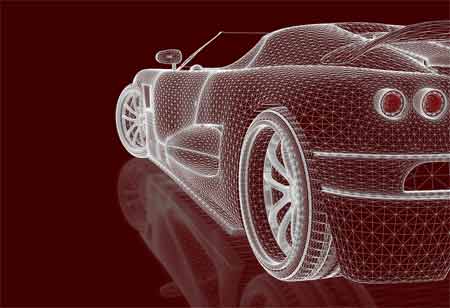THANK YOU FOR SUBSCRIBING
THANK YOU FOR SUBSCRIBING
Be first to read the latest tech news, Industry Leader's Insights, and CIO interviews of medium and large enterprises exclusively from Auto Tech Outlook

By
Auto Tech Outlook | Friday, February 09, 2024
Stay ahead of the industry with exclusive feature stories on the top companies, expert insights and the latest news delivered straight to your inbox. Subscribe today.
Catalytic converters now play a key role in mitigating emissions in electric vehicles, helping to reduce their environmental footprint.
FREMONT, CA: In the ever-evolving landscape of modern transportation, the quest for cleaner, more environmentally responsible solutions has taken center stage. At the heart of this transformation lies the catalytic converter, a remarkable piece of technology that plays a pivotal role in mitigating vehicle emissions. As electric vehicles (EVs) gain momentum worldwide, the role of catalytic converters has expanded beyond traditional gasoline-powered cars, solidifying their status as a cornerstone in the pursuit of cleaner mobility. A catalytic converter is a device ingeniously designed to combat vehicle emissions by transforming harmful exhaust toxins into less toxic gases and vapors. Its fundamental function is to serve as a guardian of the environment, acting as a line of defense against the detrimental effects of vehicular pollution. Conventionally utilized in gasoline-powered vehicles, catalytic converters have now extended their reach into the domain of electric vehicles. The core principle is consistent: promote cleaner, more sustainable transportation.
The technology that underpins catalytic converters is deeply rooted in chemistry. These devices are equipped with a catalyst, typically consisting of precious metals like platinum, palladium, and rhodium. When exhaust gases from a vehicle's engine pass through the catalytic converter, they encounter this catalyst, setting off a series of chemical reactions.
Carbon monoxide, nitrogen oxides, and hydrocarbons, which are harmful emissions produced by combustion engines, are transformed within the catalytic converter. Through chemical reactions, these toxic compounds are converted into environmentally friendlier byproducts, namely carbon dioxide, water, and nitrogen. This process effectively reduces the harmfulness of the emissions before they are released into the atmosphere, significantly reducing pollution.
The emergence of electric vehicles has added a new dimension to the role of catalytic converters. This is primarily due to the source of electricity used to charge their batteries.
Electricity generation varies widely regarding environmental impact, depending on the energy source. While some regions utilize renewable energy, such as solar or wind power, others rely on fossil fuels, which can result in higher emissions. As a result, electric vehicles indirectly contribute to emissions depending on the electricity grid from which they draw power. To address this, upgrading the catalytic converter in an electric vehicle becomes a crucial step in reducing its environmental footprint. By further minimizing emissions released into the environment, an upgraded catalytic converter aligns EVs more closely with the vision of clean, sustainable mobility. The adoption of catalytic converter technology in electric vehicles embodies the automotive industry's commitment to cleaner mobility and reduced environmental impact. In a world where climate change and air quality are pressing concerns, catalytic converters serve as catalysts for change. They symbolize a shift towards more responsible and sustainable transportation, heralding a future where mobility and environmental stewardship coexist harmoniously.
Automakers and researchers are committed to exploring new catalytic converter technologies as the demand for cleaner vehicles continues to rise. These innovations aim to further enhance the efficiency and effectiveness of emissions reduction in all types of vehicles. While there is still much research and development to be carried out, catalytic converters are on the cusp of transformative advancements that will redefine their role in shaping a more sustainable future.
 Copyright © 2025 AutoTech Outlook. All Rights Reserved | Privacy Policy | Subscribe | Sitemap | About us | Feedback Policy | Editorial Policy
Copyright © 2025 AutoTech Outlook. All Rights Reserved | Privacy Policy | Subscribe | Sitemap | About us | Feedback Policy | Editorial Policy 



